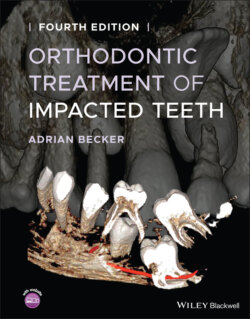Читать книгу Orthodontic Treatment of Impacted Teeth - Adrian Becker - Страница 71
Extra‐oral radiographs
ОглавлениеThe panoramic view, while not showing detail to the same degree as a periapical radiograph, has the advantage of simply and quickly offering a good scan of teeth and jaws, from the temporo‐mandibular (TM) joint on one side to the TM joint on the other. It is probably true to say that today orthodontists are in general agreement that this radiograph gives the most qualitative information to act as a starting point from which to proceed to other forms of radiography, in line with the demands of the particular situation in any given case.
True and oblique extra‐oral views (Figure 4.3a–c) and the variously angulated oblique occlusal radiographs all provide information that may be used to complement the periapical radiograph, particularly when tooth displacement is severe. However, the use of any oblique radiograph, be it a single periapical, an occlusal or a lateral jaw radiograph, for the accurate localization of a buried tooth may frequently be misleading. This being so, two incipient dangers exist. First, a surgical procedure may be misdirected and a flap opened on the wrong side of the alveolar process. Second, misinterpretation of the tooth’s position may lead the operator to consider there to be a very favourable prognosis for biomechanical resolution when in fact the tooth may be in a completely intractable position. In such circumstances, therefore, the choice of treatment will be inappropriate.
In view of these and other shortcomings, these cases are now diagnosed and treatment planned using CBCT imaging and the only extra‐oral radiographs still in use, to complement panoramic radiographs, are the lateral and PA cephalometric projections.
